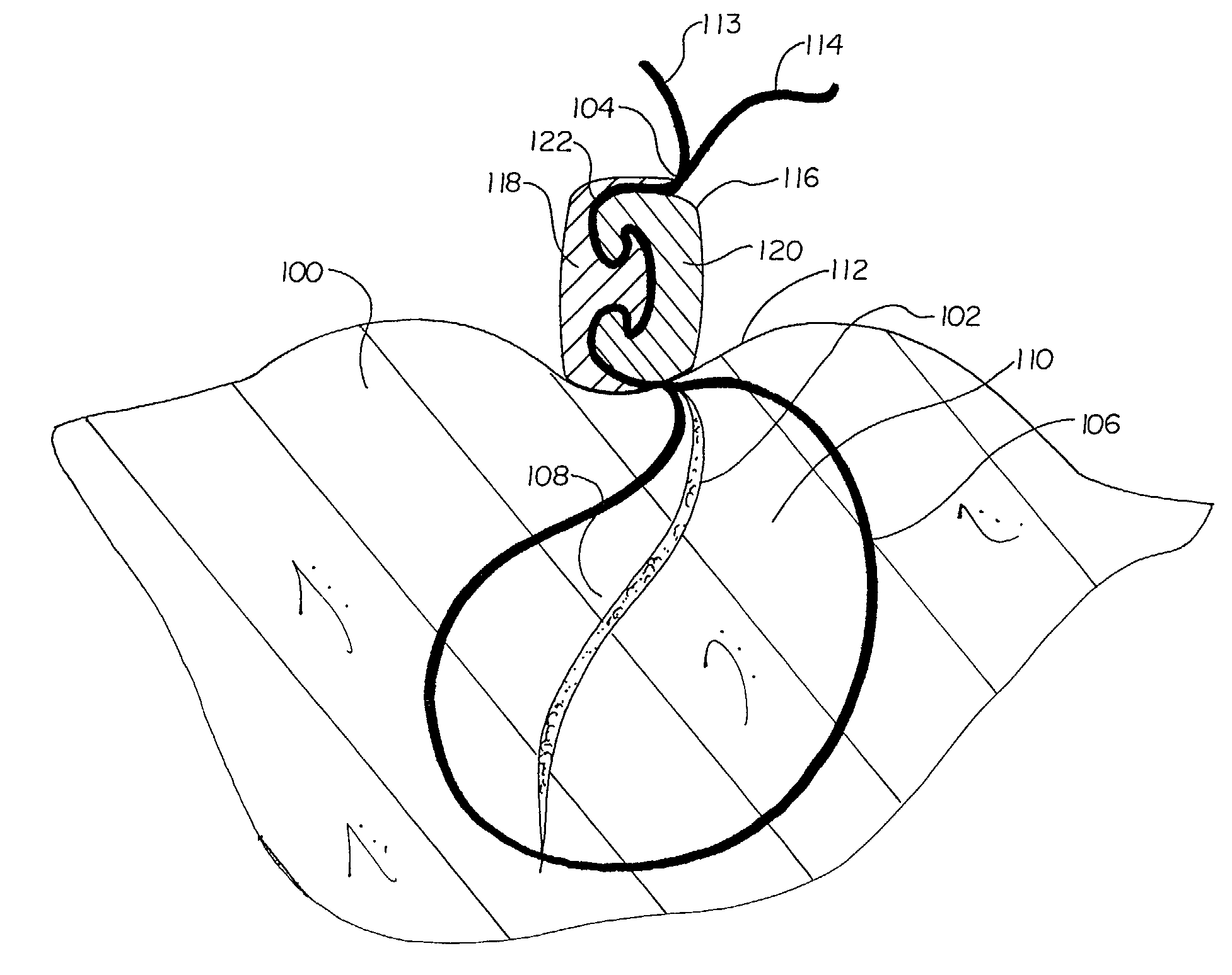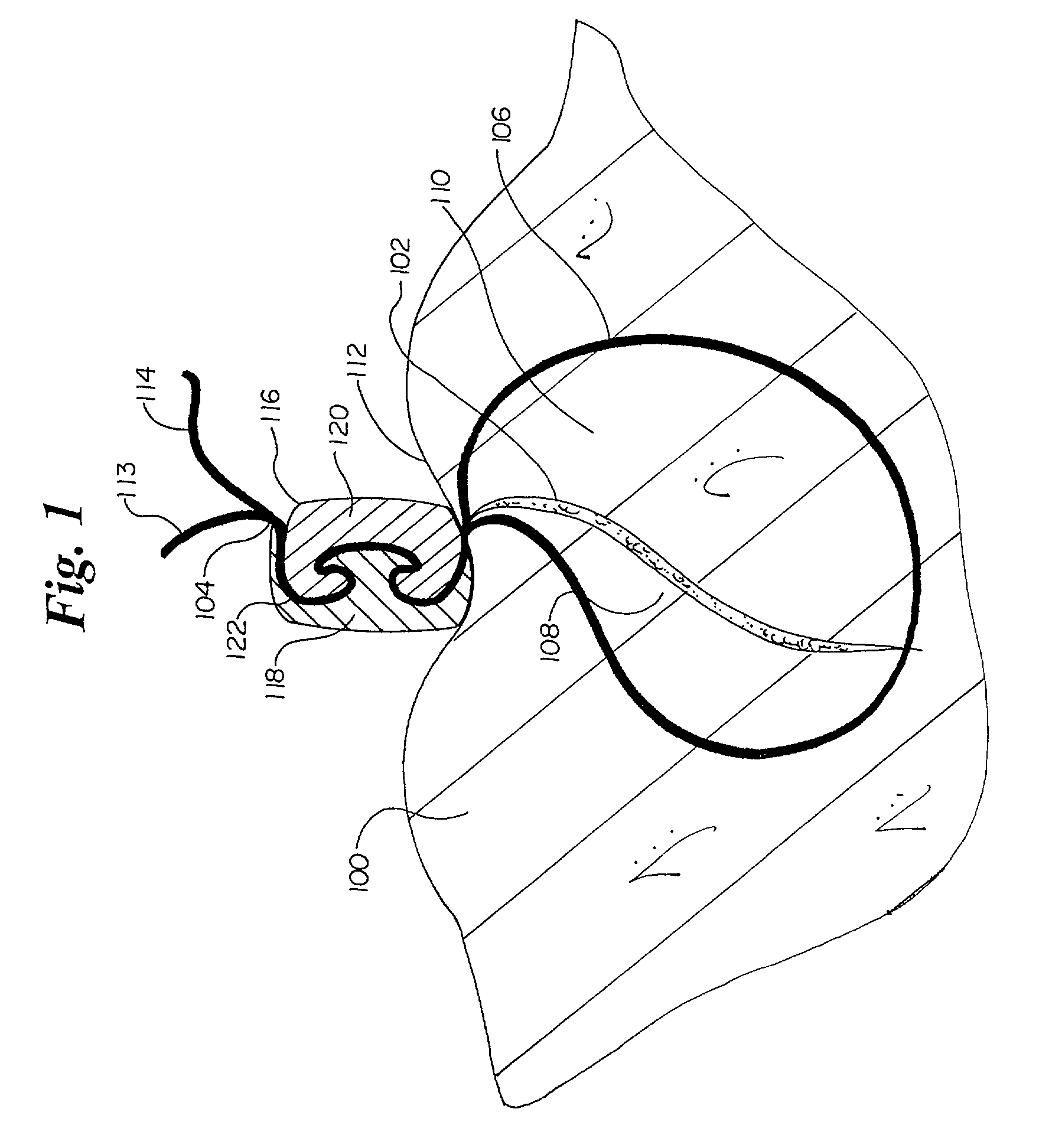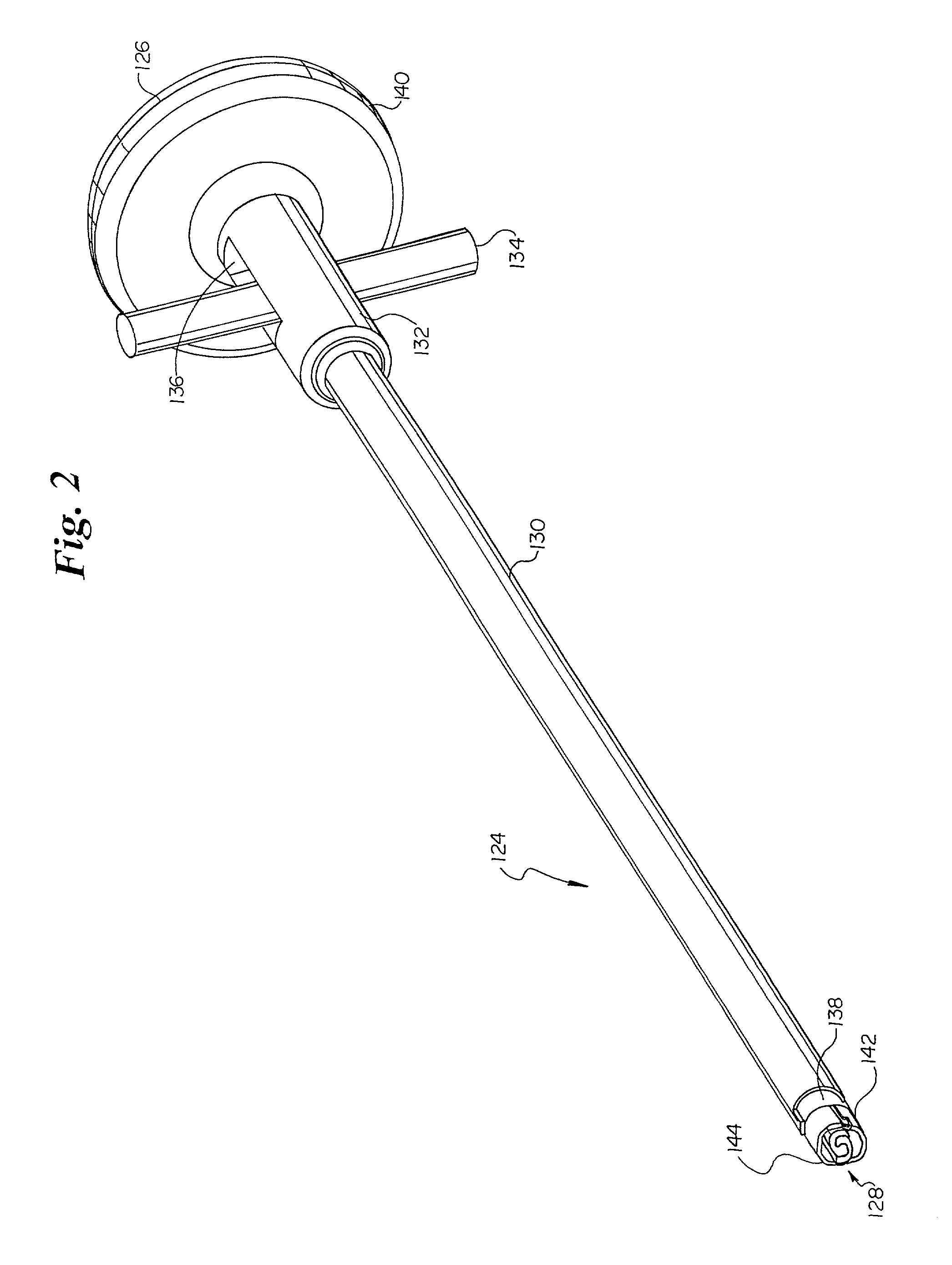Suture lock having non-through bore capture zone
a technology of suture lock and capture zone, which is applied in the field of suture lock, can solve the problems of increased closure time, difficulty in proper knot tying, and limited access to the surgical site, and achieve the effect of being easily adjusted
- Summary
- Abstract
- Description
- Claims
- Application Information
AI Technical Summary
Benefits of technology
Problems solved by technology
Method used
Image
Examples
Embodiment Construction
[0027]FIG. 1 depicts a tissue closure using the suture lock of the present invention. Tissue 100 is separated by a tissue opening or incision 102. Using a length of suture 104, a physician draws together living tissue 100 through the use of a suture loop 106. Suture loop 106 forcibly draws opposing layers 108 and 110 of living tissue 100 into intimate physical contact. Suture 104 exits the tissue 100 at a tissue surface 112. Where suture 104 exits the tissue surface 112, a pair of suture ends or segments 113 and 114 are present. Suture 104 is held in place at the tissue surface 112 through the use of a suture lock 116, as will be described.
[0028]For purposes of the present invention, it will be understood that suture lock 116 can be used to secure suture segments 113 and 114 in a variety of configurations. While suture 104 is typically used to close an opening, wound, or incision 102, it will be recognized that suture lock 116 may be used with sutures 104 for other purposes, such as...
PUM
 Login to View More
Login to View More Abstract
Description
Claims
Application Information
 Login to View More
Login to View More - R&D
- Intellectual Property
- Life Sciences
- Materials
- Tech Scout
- Unparalleled Data Quality
- Higher Quality Content
- 60% Fewer Hallucinations
Browse by: Latest US Patents, China's latest patents, Technical Efficacy Thesaurus, Application Domain, Technology Topic, Popular Technical Reports.
© 2025 PatSnap. All rights reserved.Legal|Privacy policy|Modern Slavery Act Transparency Statement|Sitemap|About US| Contact US: help@patsnap.com



